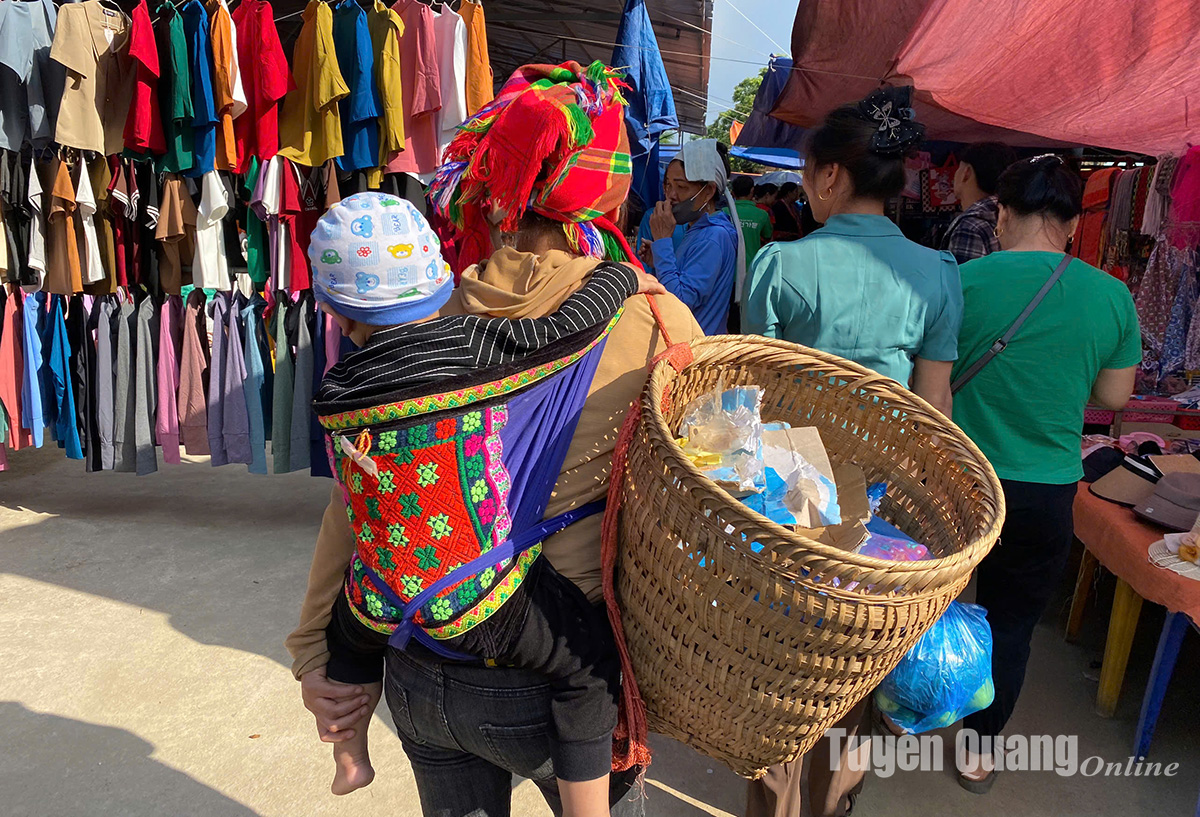
Tay ethnic people in Lam Binh district
Cultural Ambassadors” of the Village
According to the Lam Binh District Division of Culture, Science, and Information, there are nearly 32 active homestays in the district, mainly located in the communes of Lang Can, Khuon Ha, Thuong Lam, and Hong Quang. Remarkably, Tay women serve as the main force behind these accommodations, taking on essential responsibilities such as receptions, preparing traditional dishes, performing folk songs, and providing cultural experiences.
“What visitors look for when coming to our village is the chance to immerse themselves in the local lifestyle and culture. Most of these values are preserved and passed down by generations of Tay women, through Then singing, Coi chanting, traditional dishes, and the art of hospitality. That’s why women here are not just homemakers; they are the true ‘cultural ambassadors’ of the village” – Said Ms. Hoang Thi Tien, owner of a homestay in Khuon Ha commune. Dressed in hand-embroidered traditional attire, these women greet visitors with warm smiles and serve signature dishes such as grilled stream fish, smoked sausage, five-colored sticky rice, and rice wine.
Ms. Hua Thi Phuong, Chairwoman of the Lam Binh District Women’s Union, emphasized: “We recognize local women as the cornerstone of community-based tourism. Therefore, it’s essential to equip them with proper knowledge and skills. Besides training programs, we’ve established clubs like ‘Tay Women in Community Tourism’ and organized folk performance teams across Phuc Yen, Lang Can, Khuon Ha, and Thuong Lam communes, creating space for exchange, learning, and development.”
To date, the district has set up 100 folk art troupes with more than 140 active members. These troupes not only support each other in livelihood development but also play a vital role in preserving and teaching traditional folk songs and dances to the younger generation.
Promoting Tay Specialties to Signature Brands
In addition to preserving intangible cultural heritage, Tay women in Lam Binh also integrate local specialties into tourism services. Traditional dishes such as smoked black pork, grilled fish, sour bamboo shoots, and ant egg sticky rice savory (known as Peng Lang Lay) are prepared and introduced by the women themselves. Many of these have become sought-after delicacies, with tourists placing orders to take home as souvenirs.

Peng Lang Lay – a signature dish of the Tay people in Lam Binh
“We prioritize using clean, locally sourced ingredients for our dishes. Some returning guests even pre-order items like smoked sausages, dried bamboo shoots, or corn wine during festival seasons. Thanks to tourism, our family earns an additional 150–200 million VND annually” – Said Ms. Luonng Thi Xuyen, a homestay owner in Lang Can commune.
Beyond cuisine, many women have revived and promoted traditional handicrafts such as embroidery, indigo weaving, and handmade brocade items like handbags, bracelets, and keychains - offering both a supplementary income and a way to preserve ethnic Tay aesthetics.
Community-based tourism was once unfamiliar to the people of Lam Binh, especially Tay women. Their lives used to revolve around farming and housework, with limited exposure to outside trends. However, as the local government rolled out tourism initiatives, many women boldly embraced new mindsets and transitioned into service-based economic activities.
The transformation in the economic thinking and practices of Tay women in Lam Binh not only helps improve household incomes but also affirms their role and status within the community. They are not only keepers of the hearth but also guardians and promoters of cultural identity, and key actors in driving sustainable community tourism.
According to Mr. Hoang Tien Dung, Deputy Head of the District Division of Culture, Science, and Information, Lam Binh will continue investing in training local people, especially ethnic minority women, in tourism skills. The district also encourages the development of unique tourism offerings such as village experience tours, traditional cuisine, folk arts, and the revival of ancient festivals, with women at the heart of these activities. This is considered a vital foundation for Lam Binh’s sustainable tourism growth in the coming years.
With their dynamism, creativity, and cultural pride, Tay women in Lam Binh are steadily asserting their role and making invaluable contributions to the development of local community-based tourism. They not only enrich their families but also promote the culturally rich image of Tuyen Quang to domestic and international visitors.
Tuyen Quang Portal







